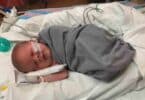Back when we grew up, naps were just a part of life until you hit the first grade. But pressures on schools to keep up and busy lifestyles at home have made the toddler nap a bit evasive. Is this a bad thing? A recent study from the University of Massachusetts Amherst suggest so.
In a first-of-its kind study, researchers from the university looked at 40 children from six different preschools in western Massachusetts. All of the children were instructed to play a game, much like the game Memory. But that game did much more than just provide them with a few moments of fun; it measured their “visual-spatial” recall.”
Preschools played the first round at 10 a.m. and finished playing when they were able to accurately remember where 75 percent of the images were located. After the game was completed, the children were then divided into two groups. The first was encouraged to nap, and on average, slept about 77 minutes. The second group did not nap at all.
After nap time, children played the memory game again. Those that took a nap were able to remember 75 percent of the items when they woke up. However, those that did not nap scored 10 points lower, remembering only about 65 percent of the items.
The test was then duplicated the next day, and children were again separated into two groups to ensure that the test performance hadn’t had anything to do with how alert the children happened to be the day before. However, even on the second day, scores remained the same.
“Until now, there was nothing to support teachers who feel that naps can really help young children. There had been no concrete evidence behind that,” Dr. Rebecca Spencer, an assistant professor in the department of psychology at the university had said in a press release. “This is the science that’s needed to preserve naptime. If our goals are to prepare children for early education, the naps are consistent with that goal because it’s really helping them to learn.”
But even with the evidence gained from the classrooms, researchers felt they needed more to back up their statements. So they asked 14 additional children to come to a sleep lab, all of which underwent a polysomnography, or a sleep study – a test that records brain waves, oxygen levels and other bodily processes that happen during sleep. On average, they napped about 73 minutes.
During the nap tests, researchers were looking for a very specific brain wave called sleep spindles. These bursts of activity occur when the brain keeps new information it learns. During naps, researchers did see an increase in the amount of sleep spindles in the children tested.
With the combined information, the study authors have publicly asked that all preschools and daycare centers consider this new information when deciding if naptime should be included within the school day. But the call is also being made to parents who have their children at home.
“We hope these results will be [used] by policy makers and center directors to make educated decisions regarding the nap opportunities in the classrooms,” Dr. Spencer said in the press release. “Children should not only be given the opportunity, they should be encouraged to sleep by creating an environment which supports sleep.”
Related Articles:
- Weight of Pregnant Women Jeopardizes Health of Mother and Baby
- Two-Year Old Toddler from Saudi Arabia Youngest to Ever Receive Bariatric Surgery to Combat Weight
- Do Home Births Put Newborns at Risk?







